[Media Invitaion] Facility Tour for Coverage of the TOKYO SKYTREE TOWN Disaster Control Functions and Research Hub
Call for International Media Participation:
Facility Tour for Coverage of the TOKYO SKYTREE TOWN Disaster Control Functions and Research Hub
-Date: Monday, October 7, 2024-
Due to the large number of applications, we would like to stop accepting new applications.
Thank you very much for all the applications. (Updated at 10:00, October 3, 2024)
TOKYO SKYTREE was built as the world’s tallest free-standing broadcasting tower.
The two observation decks, located at heights of 350 and 450 meters, reached a total of 50 million visitors on September 21, 2024, marking 12 years since its opening. In fiscal 2023, with the global recovery from the COVID-19 pandemic, overseas visitors represented about 30% of our total guests, meaning that TOKYO SKYTREE is a Tokyo landmark loved by tourists from around the world.
In Japan, which is prone to earthquakes, typhoons, and other natural disasters, TOKYO SKYTREE is a safe and secure tourist facility. At the same time, the tower is equipped with various disaster control functions, serving as a critical hub for disseminating information to maintain broadcasting and communication capabilities even during disasters. Taking advantage of its 600-meter height, various research institutions conduct observation activities at their research sites on the tower.
We will hold a facility tour on Monday, October 7, 2024, for coverage of TOKYO SKYTREE’s disaster control functions for earthquakes, typhoons, and other disasters, as well as the research sites that take advantage of the tower’s height. This tour will include access to areas usually off-limits at TOKYO SKYTREE TOWN, which is designed as a single town comprising TOKYO SKYTREE and the commercial facilities at its base.
Facilities for Coverage
■Disaster Control Facilities
TOKYO SKYTREE TOWN is equipped with various disaster control functions to make the facility a disaster-resilient, safe, and secure place for people to stay. This tour will allow participants to view TOKYO SKYTREE’s central pillar, which is capable of reducing vibrations from an earthquake by up to 50%. Other highlights include the high-altitude disaster monitoring cameras installed by the Sumida Ward Office, which cover almost the entire ward, as well as additional disaster control functions designed to respond to large-scale natural disasters, such as earthquakes and flood damage. An explanation of TOKYO SKYTREE’s structure will be given by a representative from Nikken Sekkei, while the regional disaster control base will be discussed by a disaster control section officer from the Sumida Ward Office.
■Lightning Observation Research Site – Gathering Globally Significant Data –
While widely recognized as a broadcasting tower and a landmark, TOKYO SKYTREE is also a hub for various research institutions conducting observations by taking advantage of its height. In this coverage event, a researcher will explain the lightning observation research at the height of 497 meters, a collaborative research effort with the Central Research Institute of Electric Power Industry.
We understand your busy schedule, but we would like to warmly invite you to participate in the upcoming facility tour. Please note that, due to limited space at the tour locations, the number of participants is limited to [three people per company].
To participate, kindly complete the application form on the following page.
1. Date and time: 1:00 p.m. to 5:00 p.m. (admission from 12:45 p.m.) on Monday, October 7, 2024
2. Reception area: TOKYO SKYTREE 1F, Group Floor, East Group Lobby
3. Schedule
| Start | End | |
| 12:45 | 13:00 | Reception |
| 13:00 | 13:15 | Explanation of the Disaster Control Functions and Research Site at TOKYO SKYTREE |
| 13:20 | 13:40 |
Truss Structure (TOKYO SKYTREE 1F) |
| 13:50 | 14:05 |
Central Pillar Vibration Control (TOKYO SKYTREE B1F) |
| 14:25 | 14:55 | Lightning Observation Research Site (at the 497-meter point of TOKYO SKYTREE) |
| 15:05 | 15:25 | SumidaWard Office High-altitude Disaster Monitoring Cameras (at the 260-meter point of TOKYO SKYTREE) |
| 15:40 | 16:00 | SumidaWard Office Crisis Management Base (within TOKYO SKYTREE) |
| 17:00 | End of Tour |
* Subject to change due to circumstances.
4. Note
・Cost: Free *English interpretation provided (simultaneous)
・We will send prospective participants materials outlining the coverage and shooting conditions, as well as the participation requirements. Please complete the form after carefully reading the details and bring it with you on the day of the event.
・Please note that coverage details are subject to change in the event of stormy weather (rain, strong winds, thunder, etc.).
5. Where to apply
https://forms.gle/tfSKvFqvDBkTXjSH6

Application Form
[Contact Information]
Ayako Sato, Foreign Press Center Japan
TEL 03-3501-5251 MAIL:sc@fpcjpn.or.jp
[Disaster Control Functions and Research Sites for Coverage]
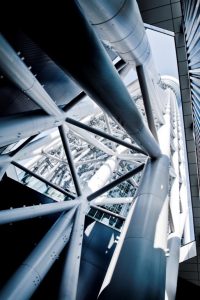
ⒸTOKYO-SKYTREE
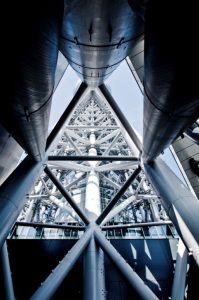
ⒸTOKYO-SKYTREE
(1) Truss Structure
You can shoot images and videos of the truss structure of TOKYO SKYTREE from the location where the first steel framework of the tower was installed during construction.
High-strength steel pipes, with approximately twice the rigidity of those used in ordinary structures, are employed in the most rigid components of TOKYO SKYTREE®. The tower body has an architectural framework called a truss structure, which
connects main members, horizontal members, and diagonal members in a triangular shape.
The silhouette change from a triangle to a circle, along with the concave and convex curves characteristic of traditional Japanese architecture, can also be seen from this spot.

Image courtesy of Nikken Sekkei
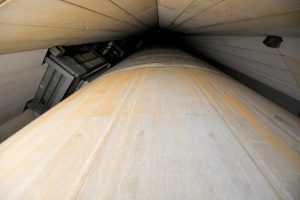
ⒸTOKYO-SKYTREE
(2) Central Pillar Vibration Control
You can photograph and film the central pillar vibration control system.
At the center of TOKYO SKYTREE® is the steel-reinforced concrete cylindrical pillar called the central pillar.
The central pillar is structurally separated from the steel-framed tower, making it possible to offset vibrations of the entire tower with the difference in shaking periods between the central pillar and the tower body.
The central pillar can reduce vibrations of the tower by up to 50% in the event of an earthquake, and by up to 30% in the case of strong wind, thereby maintaining the functions of the broadcasting tower.
(3) Sumida Ward High-Altitude Disaster Monitoring Cameras
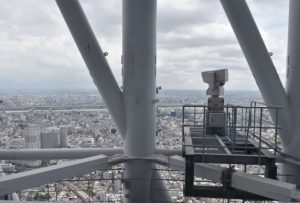
Photo courtesy of Sumida Ward
You can capture images and videos of the high-altitude cameras positioned at the 260-meter point of TOKYO SKYTREE.
There are two disaster monitoring cameras installed by the Sumida Ward Office at the 260-meter point of the tower. The cameras cover nearly the entire ward, with the footage being sent to the ward office and other relevant bodies.
* Looking through the viewfinder is not allowed. You can photograph and film the cameras themselves.
(4) Sumida Ward Crisis Management Base
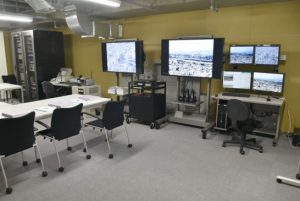
Photo courtesy of Sumida Ward
You can take pictures and videos of the disaster control activity space and emergency supplies storage in TOKYO SKYTREE TOWN.
The Sumida Ward Office established a disaster control activity space at TOKYO SKYTREE TOWN, along with emergency supplies storage that holds food, water, blankets, portable toilets, and other essentials for people unable to return home.
(5) Lightning Observation Research Site
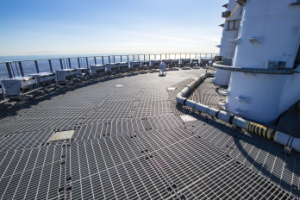
ⒸTOKYO-SKYTREE
You can photograph and film the Rogowski coil that measures lightning strikes, located both on the ground and at the 497-meter point of TOKYO SKYTREE.
TOKYO SKYTREE experiences an average of roughly 10 lightning strikes per year. The Rogowski coil, installed at the 497-meter point, measures the current from lightning strikes to TOKYO SKYTREE.
We work on identifying the characteristics of lightning that occur in urban areas.
You can also capture the spectacular views of central Tokyo and the entire Kanto region from the 497-meter point.




